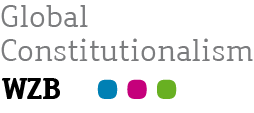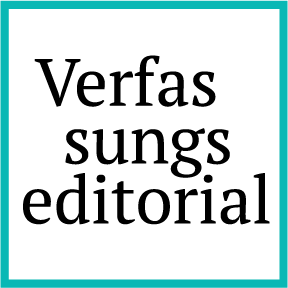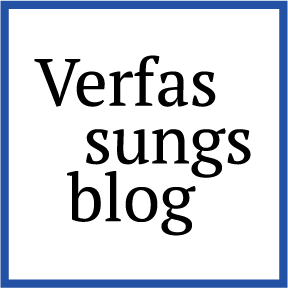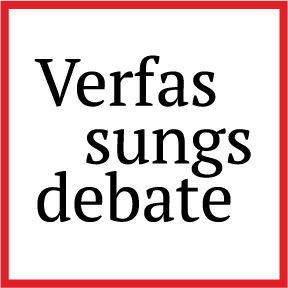Rainbow Europe or Rainbow Washing?
A Comment on the EU’s updated LGBTIQ+ Equality Strategy
Over the years, different EU institutions have tried to translate Phillip Ayoub and David Paternotte’s idea of a “Rainbow Europe” into law. In 2020, for instance, the European Commission published its first-ever LGBTIQ Equality Strategy under the banner of building a “Union of Equality”. This slogan was reproduced by Commission President von der Leyen in her 2020 State of the Union speech, when she promised that she “will not rest when it comes to building a Union of equality (…) where you can be who you are and love who you want”. Two years later, the Commission went even further by proposing a direct link between the EU founding values in Article 2 TEU and LGBTIQA+ rights in the context of an infringement action against a Hungarian law that censors Queer books and media.
Yet, recent developments have increasingly challenged this narrative. A survey conducted by the EU Fundamental Rights Agency (FRA) in 2024 revealed that discrimination faced by LGBTIQA+ individuals remains dramatically high. In addition, a growing number of EU Member States have proposed or introduced legislation that directly targets LGBTIQA+ individuals (see, for instance, recent developments in Bulgaria, Slovakia, and Italy). What a decade ago seemed to be Hungary’s isolated case is today a growing trend across the Union.
Against this backdrop, the European Commission just published its new LGBTIQ+ Equality Strategy (2026-2030). In my view, however, this initiative represents a downgraded commitment of the European Commission towards the protection of Queer individuals.
High ambitions, limited results
In 2020, the European Commission adopted, by means of a Communication, the EU LGBTIQ Equality Strategy (2020-2025). Symbolically, this was a milestone: a Commission policy document explicitly and comprehensively dedicated to the protection of LGBTIQA+ individuals. This innovation also came during a legislative term marked by the unprecedented appointment of a Commissioner for Equality and the creation of a dedicated Commission unit on non-discrimination and LGBTIQA+ matters.
The Strategy was built around four major pillars: tackling discrimination against LGBTIQ people, ensuring LGBTIQ people’s safety, building LGBTIQ-inclusive societies and leading the call for LGBTIQ equality around the world. Each of these pillars identified a set of legislative and non-legislative initiatives to be achieved within a fixed timeline, thus serving as a roadmap for the Commission’s work over the entire mandate.
From a legal perspective, two legislative proposals stood out. The first one concerned the inclusion of both hate crimes and hate speech against LGBTIQA+ persons in Article 83(1) TFEU. This update would allow the Commission to introduce a proposal for a Directive on minimum rules concerning the definition of criminal offences and sanctions. The second initiative was the so-called “Equality Package”, a proposal intended to harmonise rules concerning parenthood in cross-border situations. This would have mandated the mutual recognition of parental bonds across the EU, including between same-sex parents and their children. Alongside these initiatives, the Strategy stressed the importance of overcoming the stagnation of the proposal for a Horizontal Anti-Discrimination Directive.
These two legislative proposals were built upon two legal bases – Articles 83(1) and 81(3) TFEU respectively – that provide a special legislative procedure, which requires the Council to act unanimously after consulting the European Parliament. Despite the Parliament’s positive endorsement of these legislative initiatives (here and here), both proposals remain blocked in the Council due to the opposition of multiple Member States. Likewise, no progress has been made regarding the Horizontal Anti-Discrimination Directive, which has remained stuck in the Council since being proposed in 2008.
Furthermore, the Strategy also entailed a number of minor legislative initiatives. For instance, Directives 2024/1499 and 2024/1500 extended the remit of equality bodies (agencies in the Member States that support victims of discrimination) to discrimination based on sexual orientation in the field of employment. In parallel, the Strategy outlined some specific rules on LGBTIQA+ rights to be embedded into other pieces of EU legislation (the so-called “mainstreaming”). An example is the Artificial Intelligence (AI) Act adopted in June 2024, which prohibits AI systems using biometric data to determine a person’s sexual orientation. However, while the Strategy proposed extending this provision also to gender identity, this does not appear in the final text of the AI Act.
Against this backdrop, both legislative proposals outlined in the Strategy – which address LGBTIQA+ individuals explicitly and directly – remain blocked in the Council. Similarly, the Member States failed once again to make progress on the Horizontal Anti-Discrimination Directive. In my view, this stagnation mirrors the divergent legal and political approaches of the Member States, as well as the highly politicised nature of LGBTIQA+ rights. In parallel, it seems that small-scale legislative intervention and the mainstreaming of LGBTIQA+ concerns into other pieces of EU law are more likely to be successful. This approach leaves less room for politicisation, while the ordinary legislative procedure (with its qualified-majority voting) allows bypassing the opposition of regressive Member States.
Equality, selectively enforced
Another key objective of the Strategy was to monitor the implementation of EU law by the Member States and initiate infringement procedures in cases where EU law had been breached in relation to LGBTIQA+ rights (see also the latest Implementation Report).
Throughout the timeframe of the Strategy (2020-2025), several regressive laws that target LGBTIQA+ individuals were enacted at the national level. In 2021, for example, Hungary passed a law that restricts access to books and other media that portray Queer experiences. In addition, just a few months ago, the Orbán-controlled Parliament adopted the so-called Freedom of Assembly Act, which enables authorities to classify Pride marches as violations of the Child Protection Act and, as a result, de facto limits the freedom of assembly. In a similar vein, Bulgaria has introduced a law that prohibits the discussion of LGBTQIA+ topics in schools, and, more recently, Slovakia passed a constitutional reform that recognises only two genders (assigned at birth), limits adoption rights to opposite-sex married couples and bans any discussion of Queerness in schools.
Initially, the Commission took a bold stance against Hungary’s attacks on the LGBTIQA+ community. Just three years ago, the Commission referred Hungary to the EU Court of Justice over its “anti-propaganda law”. Notably, besides raising a series of technical violations of EU law, the Commission argued that Hungary had infringed upon the Charter and the EU “founding values” in Article 2 TEU. This allegation has recently been endorsed by Advocate General Tamara Ćapeta. While the judicial enforcement of Article 2 TEU is a highly controversial question among scholars (see Bonelli and Claes; see also Spieker), this case symbolically demonstrated the European Commission’s commitment to protect Queer individuals from attacks on their rights at the national level.
But the very same Commission did not coherently act when faced with similar developments. For instance, some civil society organisations suggested that the Hungarian Freedom of Assembly Act, which also allows police authorities to use real-time AI biometric tools to identify Pride participants, violates the EU AI Act. Yet, the Commission has not taken any action so far. The same inaction can be noticed when it comes to Bulgaria and Slovakia.
In other words: the European Commission is engaging in – what I call – “selective enforcement” of EU law. Specifically, the Commission applies double standards, probably because of political factors such as President von der Leyen’s dangerous reliance on a more conservative-leaning majority, which now also includes political parties from the far-right fringe.
A downgraded commitment
On 8 October 2025, the Commission seemingly renewed its commitment by presenting a new LGBTIQ+ Equality Strategy (2026-2030). But this Strategy does not follow the structure of the previous one. Instead, it is built around three broader, more ambiguous objectives: protect, empower, and engage LGBTIQA+ people.
First, the Commission emphasised its opposition to so-called conversion practices (i.e., practices aimed at “converting” an individual’s sexual orientation or gender identity). This comes as a logical response to the European Citizens Initiative (ECI) that, just a few months ago, gathered over 1 million signatures in order to ban conversion practices at the European level. However, while the ECI suggested an EU-wide ban of these practices by including them in the list of crimes in Article 83(1) TFEU, the Commission did not follow that path. Instead, the Commission will fund a study to analyse the nature, prevalence, and impact of these practices on LGBTIQA+ people. Based on the results of this study, the Commission will supposedly promote a “structured dialogue” and focus on supporting the Member States in banning those practices, highlighting that they play a crucial role to this end.
While whether and how to follow up on a successful ECI falls within the Commission’s discretion, this choice signals caution. The Commission limits its role to that of a simple facilitator of Member States’ action, rather than being an active player in banning these practices (through, for instance, a legislative proposal). To be blunt, Ursula von der Leyen is downgrading her commitment towards the LGBTIQA+ community. Notably, the more conservative-leaning composition of her Commission has led the Union to abandon its role as a central player in protecting and advancing LGBTIQA+ rights, leaving the Member States in the driver’s seat.
Second, the Commission is supposedly committed to overcoming the unanimity blockage in the Council with regards to the two legislative proposals presented as part of the previous Strategy, as well as the proposed Horizontal Anti-Discrimination Directive. The only real innovation in this regard is that the Commission is considering abandoning the proposal of the former Strategy to include hate crime and hate speech in the list of EU crimes in favour of a new legislative initiative based on the existing areas of crime covered by Article 83(1) TFEU. This would allow us to harmonise the definition of offences committed online to include those based on the sexual orientation and gender identity of a person, simply through the ordinary legislative procedure.
Third, the Strategy reiterates that the Commission will continue monitoring the enforcement of EU law by the Member States. However, this stands in sharp contradiction to the Commission’s silence and inaction on the several examples of national laws that directly target LGBTIQA+ individuals.
Conclusion
The Commission’s new Strategy represents a downgraded commitment towards LGBTIQA+ individuals as evidenced by the tools proposed. While the previous Strategy (2020-2025) put an emphasis on legislative intervention and the enforcement of EU law, the newly proposed Strategy focuses more on softer policy instruments, such as recommendations, working groups, and data collection. This is also evident from the language used in the new Strategy: the Commission recurrently emphasises the role of the Member States in protecting LGBTIQA+ individuals. In my view, this shift can be attributed to the more conservative-leaning majority supporting the second von der Leyen Commission and its reliance on far-right political parties.
Many civil society organisations have already argued (here, here and here) that this Strategy is not fit for a society where the rights and freedoms of LGBTIQA+ individuals are increasingly under threat. Over the next five years, the true test will be whether the Commission can translate the Strategy into (at least some) tangible progress towards a “Rainbow Europe”, or whether its cautious approach will ultimately be seen as rainbow washing – a symbolic commitment masking the absence of real change.




